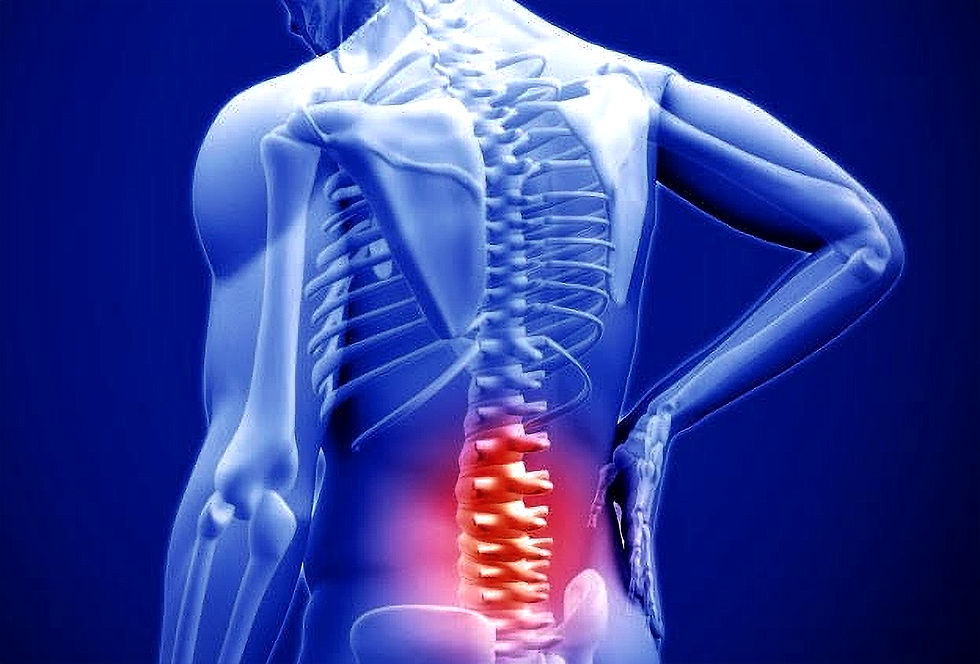Efficacy of Chiropractic Care for Post-Surgical Low Back and Radicular Pain
- Dr. Demetriou

- Feb 17
- 2 min read
Updated: May 27
Post-surgical low back pain, particularly when accompanied by radicular symptoms, can be a persistent and debilitating condition. While spinal surgery aims to correct structural abnormalities, it does not always resolve pain. In some cases, patients develop Failed Back Surgery Syndrome (FBSS), a term describing ongoing or recurrent pain despite surgical intervention. Research highlights that up to 20% of spinal surgery patients require secondary surgeries due to persistent pain or complications (Vleggeert-Lankamp, Arts & Jacobs, 2013). Given these statistics, non-invasive options like chiropractic care deserve closer attention as a primary and post-surgical treatment.
81% of post-surgical chiropractic patients reported over 50% pain reduction

Understanding Post-Surgical Low Back Pain and FBSS
Studies indicate that lumbar spinal fusion, often considered the "gold standard" for back pain, lacks a strong scientific basis for its effectiveness. Mulholland (2008) reported that spinal fusion was widely adopted despite no clear evidence that it resolves mechanical low back pain. Instead, fusion restricts movement, which may exacerbate symptoms rather than alleviate them.
Furthermore, research by Gudavalli et al. (2016) found that post-surgical patients who received conservative care, including chiropractic spinal adjustments, experienced greater long-term improvements compared to those undergoing repeat surgeries.
Chiropractic Care and post-surgical low back pain: A Proven Alternative
Chiropractic treatment, has been shown to improve post-surgical outcomes by:
Reducing intradiscal pressure
Increasing foraminal area (space around the nerve roots)
Improving facet joint mobility
Enhancing spinal range of motion
A study conducted by Gudavalli et al. (2016) found that 81% of post-surgical chiropractic patients experienced over 50% pain relief by the end of treatment, with 78.6% maintaining relief at a 24-month follow-up. These findings suggest that chiropractic care should not only be considered post-surgical low back pain but also as a primary intervention before surgery is pursued.
Could Surgery Have Been Avoided?
A critical question remains: How many surgeries could have been prevented with chiropractic intervention? Research suggests that intensive rehabilitation and non-surgical treatment options significantly reduce the need for lumbar surgery. A study of 600 patients who underwent spinal surgery found that 71% were unable to return to work within four years post-operation, with multiple surgeries further decreasing success rates (Gudavalli et al., 2016).
These statistics reinforce the importance of chiropractic care as the first line of defense against spinal conditions, adhering to the principle of "drug-free first, surgery last."
Conclusion
Surgical intervention for low back pain should be a last resort. Chiropractic care provides a safe, effective, and non-invasive approach to managing post-surgical pain and, more importantly, could prevent unnecessary surgeries in the first place. Given the overwhelming evidence supporting chiropractic as the most effective first treatment option, it is imperative for patients suffering from back and radicular pain to explore conservative care before considering surgery.
If you’re experiencing persistent back pain following surgery or want to explore non-invasive spinal care options to avoid it, MDemetriou Chiropractic is here to help. Book a consultation today to discover how chiropractic care can support your recovery.





Comments